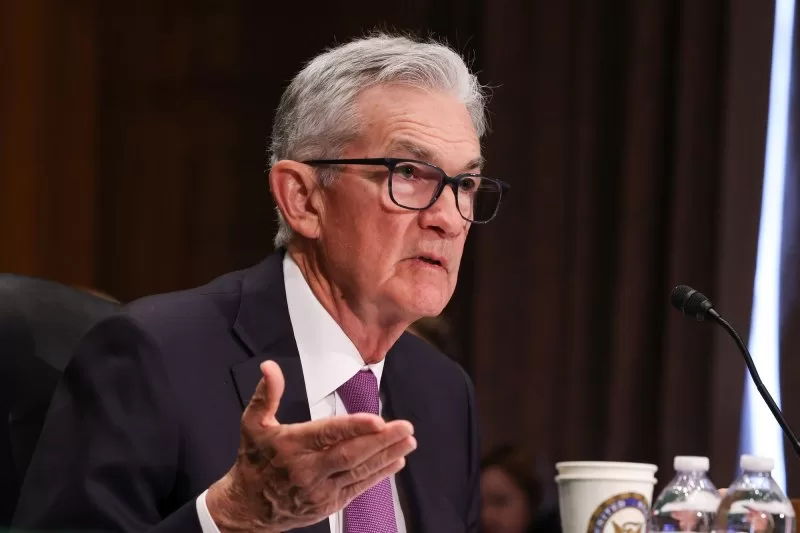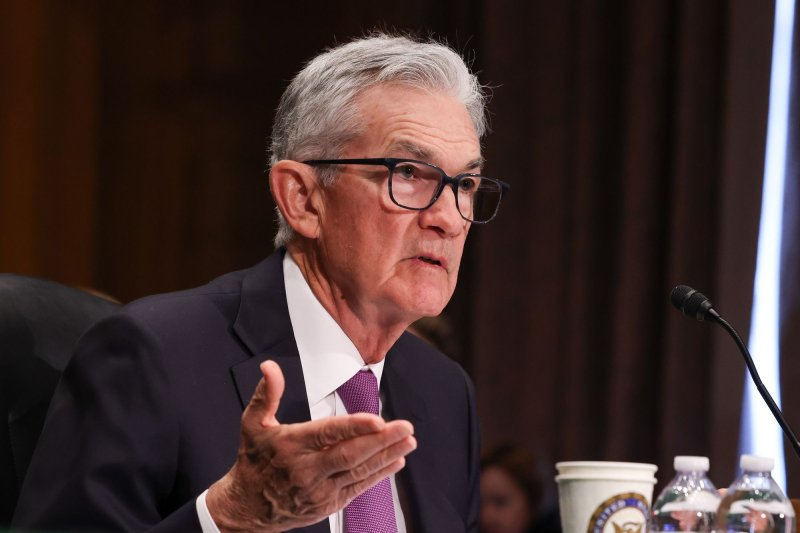Federal Reserve Chairman Jerome Powell Friday indicated interest rate cuts are coming amid positive economic data on inflation dropping to an annual rate of 2.5%. He did not say when or by how much, but said the time has come to adjust policy as the U.S. economy continues to grow at a solid pace. File Photo by Jemal Countess/UPI |
License PhotoAug. 23 (UPI) — Federal Reserve Chairman Jerome Powell on Friday indicated interest rate cuts are on the way as economic impacts of the COVID-19 pandemic begin to fade.
In his Jackson Hole, Wyo., speech Powell said “the time has come for policy to adjust” amid positive economic data on inflation dropping to an annual rate of 2.5%.
“The direction of travel is clear, and the timing and pace of rate cuts will depend on incoming data, the evolving outlook, and the balance of risks,” he said.
Powell said the U.S. economy overall “continues to grow at a solid pace.” He said his confidence has grown that inflation is on a sustainable path back to the 2% Fed target.
Powell has consistently said that economic data would drive the Fed’s interest rate decisions and his Friday remarks underline that the Fed believes the time to cut rates, based on data, has come.
“With an appropriate dialing back of policy restraint, there is good reason to think that the economy will get back to 2% inflation while maintaining a strong labor market,” Powell said.
“All told, the healing from pandemic distortions, our efforts to moderate aggregate demand, and the anchoring of expectations have worked together to put inflation on what increasingly appears to be a sustainable path to our 2% objective.”
He said the Fed’s objective was to restore price stability while avoiding sharp increases in unemployment. He said major progress has been made toward that goal.
“Pandemic-related distortions to supply and demand, as well as severe shocks to energy and commodity markets, were important drivers of high inflation, and their reversal has been a key part of the story of its decline,” Powell said, regarding inflation.
The Fed Chair said the restrictive monetary policy of raising interest rates to fight inflation reduced aggregate demand to lower inflation “while allowing growth to continue at a healthy pace.”
He said the Fed’s actions helped restore supply and demand balance, easing inflation pressures.
Four and a half years after COVID-19’s arrival, Powell said, inflation is down significantly and the labor market is no longer overheated.
A recession was avoided as the Fed pursued its data-driven monetary policy balancing act to fight inflation while sustaining an otherwise healthy economy.
Powell said most Americans alive today had not experienced the pain of inflation for a sustained period. He acknowledged that inflation brought substantial hardship, especially for people least able to afford the higher costs.
He said the global nature of inflation was unlike any period since the 1970s.
“High rates of inflation were a global phenomenon, reflecting common experiences: rapid increases in the demand for goods, strained supply chains, tight labor markets, and sharp hikes in commodity prices,” Powell said.
He said the Fed will do everything it can to support a strong labor market “as we make further progress toward price stability. “

